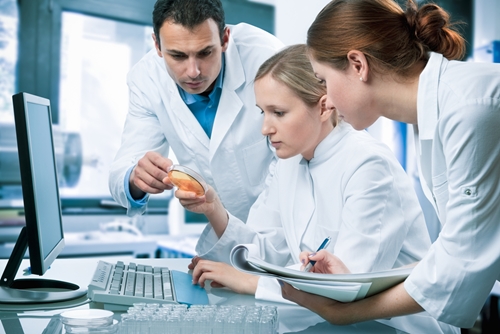New study set to test potential bone-loss therapy in space
The University of California, Los Angeles, recently received grant funding from the Center for the Advancement of Science in Space to send a group of rodents to the International Space Station and perform a study on them. Astronauts at the space station and scientists on Earth will work together using the rodents to test a potential therapy that would accelerate bone growth in humans.
ISS to be used for groundbreaking research
Chia Soo, a UCLA professor of plastic, reconstructive and orthopedic surgery, will lead the innovative experiment. The scientists hope to test the ability of a bone-performing molecule called NELL-1 to direct stem cells to start the process of bone formation and ultimately eliminate any degeneration of the bone – a cause of common bone diseases like osteoarthritis. The UCLA research team will conduct the study from the ground while the flight operation coordinated by CASIS and NASA is in progress.
NELL-1 was discovered by another member of the team, Kang Ting, a professor in dentistry, who is going to lead the efforts in developing the therapy for humans with NELL-1. Bioengineering professor Ben Wu will also assist the researchers during the study and has already modified the NELL-1 molecule, translating it into a therapy that could be useful for treating osteoporosis.
In total, the study will include 40 rodents sent to the International Space Station U.S. National Laboratory onboard the SpaceX Dragon capsule. The animals will live there for two months in a microgravity environment where the team will perform the first test of NELL-1 to have ever been conducted in space.
Long space flights like the one the rodents will take can cause drastic alterations to bone and organ systems that cannot be replicated on Earth. Therefore, in addition to providing crucial information regarding the potential and the limits of NELL-1's bone-producing effects, the mission will also identify insights about the biology of bones and how to cure several bone diseases.
Hope for bone-less treatments
The UCLA-ISS team will start the research within the first couple of months of this year, basing their experiment on previous studies that have examined similar bone molecules. The main goal is to gain new insights into prevention methods for osteoporosis and the regeneration of significant bone defects, such as those seen in seniors and wounded military soldiers. Achieving a firmer grasp on how to prevent bone loss is important, as diseases like osteoporosis are major public health issues with debilitating symptoms, such as stroke, immobility, spinal cord injury and muscular dystrophy.
"NELL-1 holds tremendous hope, not only for preventing bone loss but one day even restoring healthy bone," Ting said. "For patients who are bed-bound and suffering from bone loss, it could be life-changing."
CASIS jumped on the opportunity to work alongside the scientists at UCLA, anxious to encourage the use of the ISS as a unique microgravity environment that enables scientists to test innovative therapies and treatments to benefit human health on Earth. This rare microgravity environment has the potential to lead researchers to key information about bone loss that could not be accomplished anywhere else.
The team hopes that the mission will end in groundbreaking discoveries that allow the development of new treatments that counteract the most common bone-loss conditions experienced by humans.
"This research has enormous translational application for astronauts in space flight and for patients on Earth who have osteoporosis or other bone-loss problems from disease, illness or trauma," Soo said. "We very much appreciate the dedicated review staff at CASIS and the Center for Scientific Review, the portal for NIH grant applications, who made this ISS-NIH effort possible."
The mission, supported by the National Institutes of Health, is currently the center of attention for surgeons and physicians across the world, as the results have the potential to enhance the way bone-loss diseases are treated.



